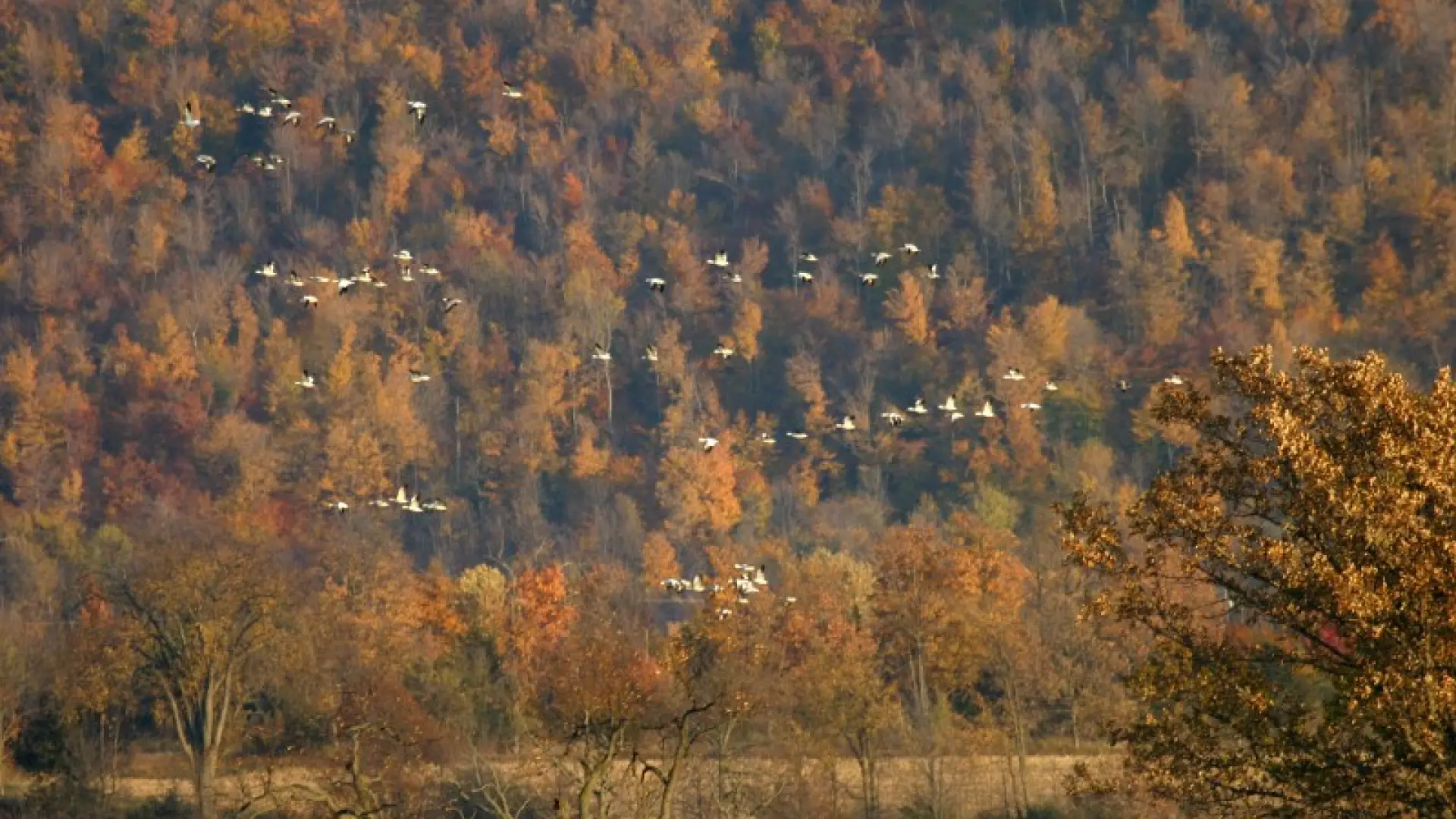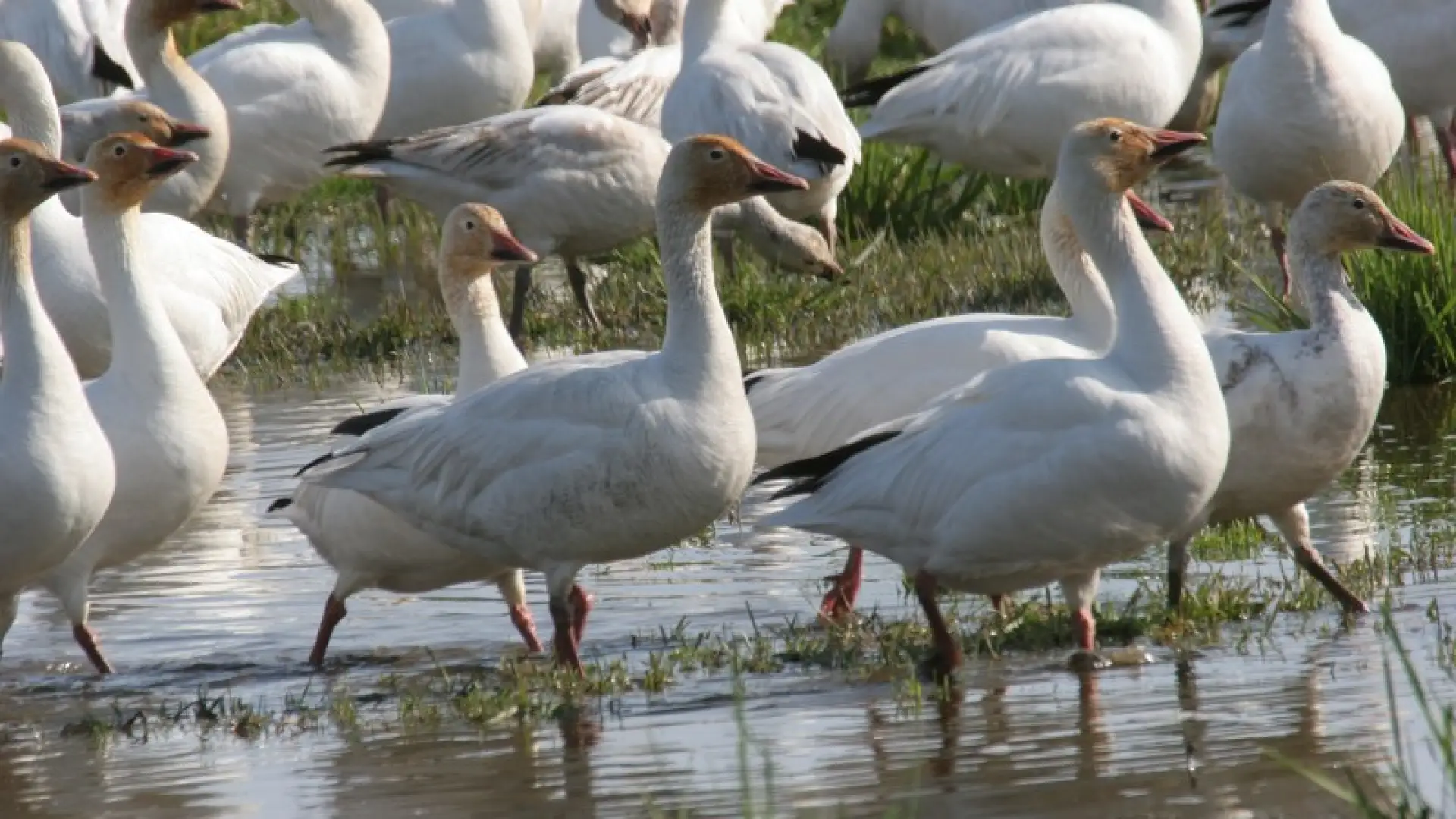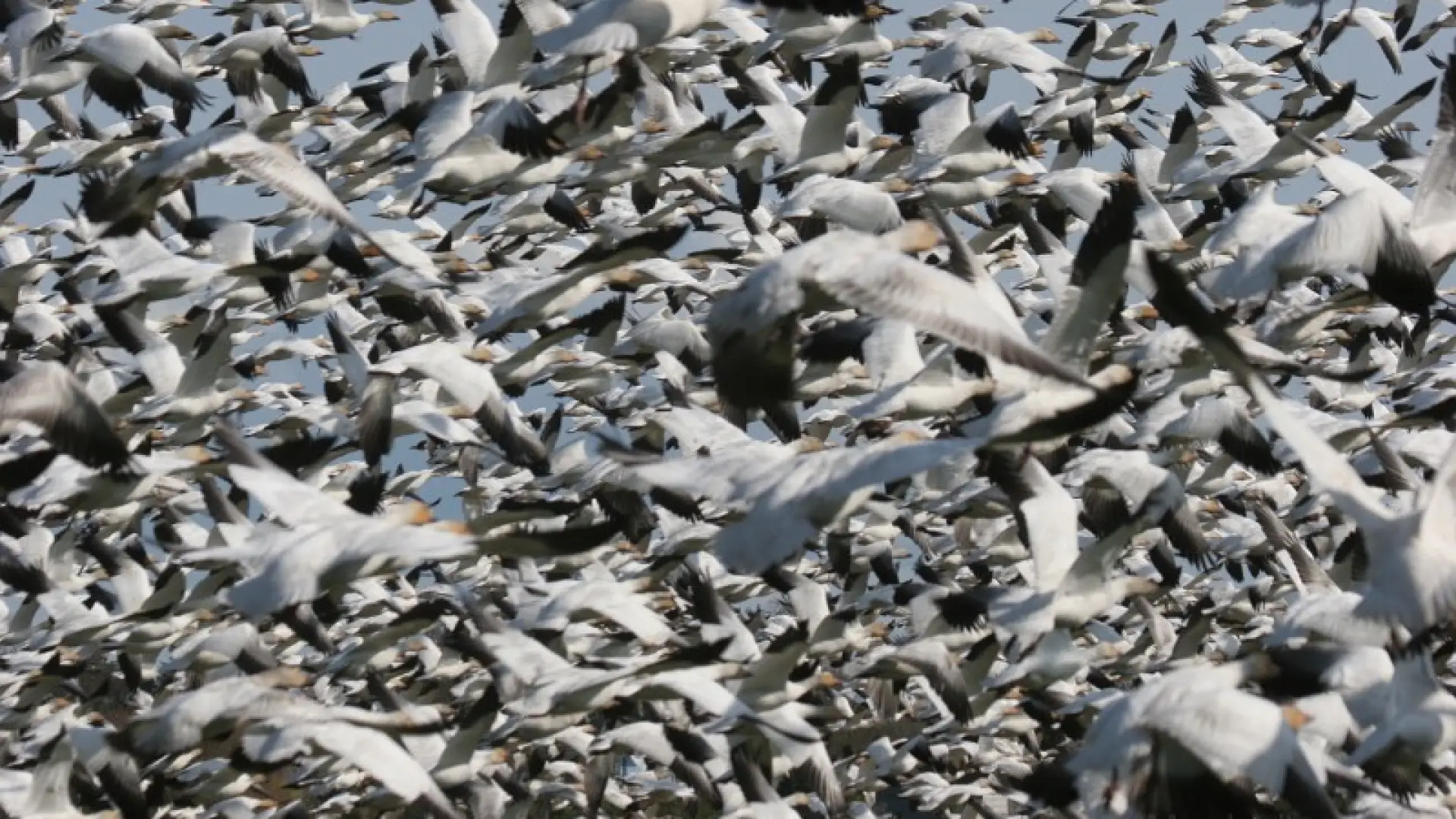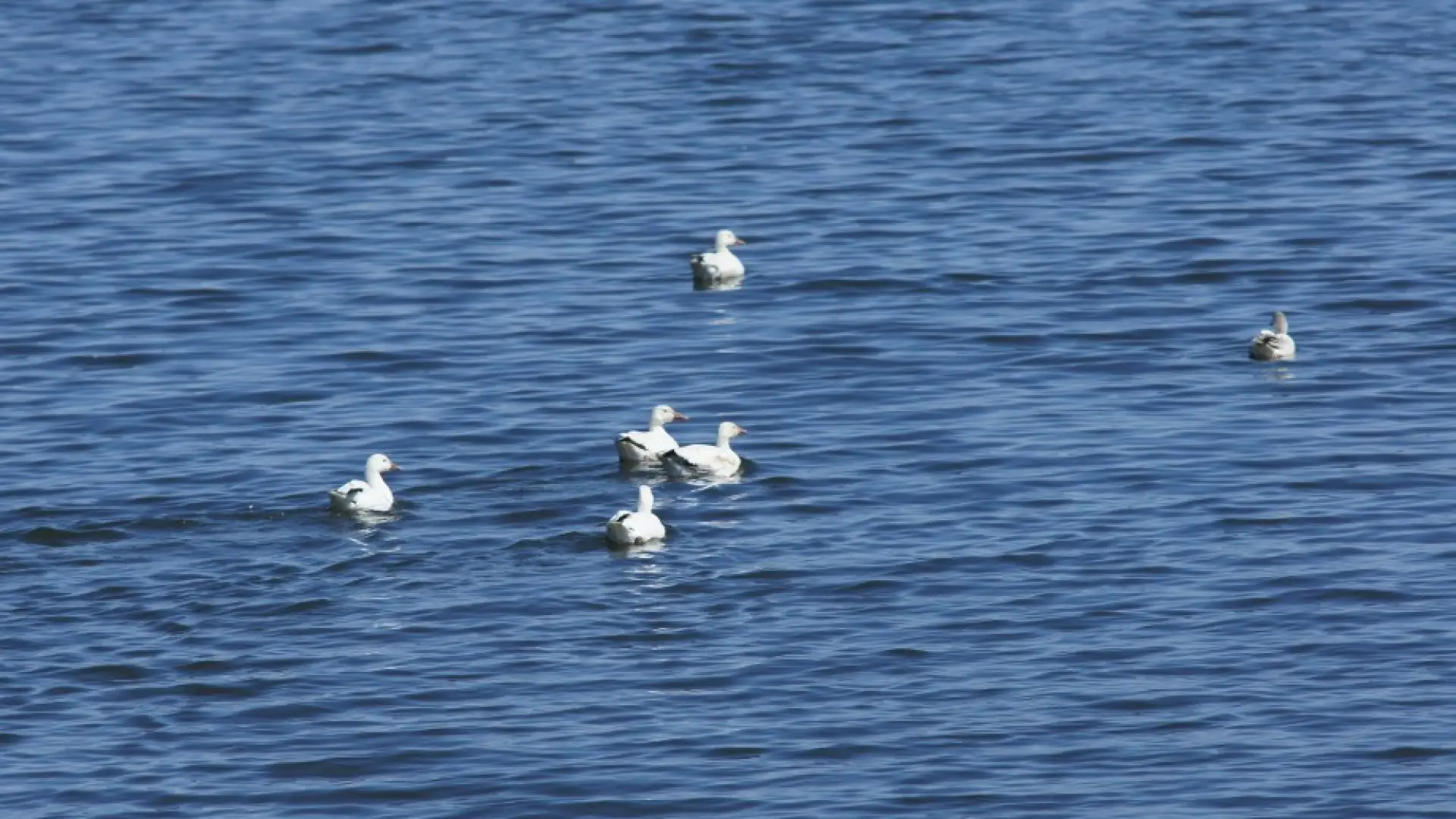
As waterfowl continue to head south for the upcoming winter, many will pass through our area. In fact, just today I found a group of fifteen bufflehead (a species of duck) on the backside of Lake Colby in Saranac Lake along the railroad tracks. And everyone is familiar with a skein of honking Canada (not Canadian) geese. But if the honking flock overhead sounds a bit different than your used to (for instance perhaps the chorus of the honking flock is somewhat slower paced), then you should be sure to look up. You may find a V of white birds with black wingtips heading south. And you will have found a flock of migrating snow geese.
It is a beautiful sight; a large V of white birds gleaming against a blue sky. For the most part, snow geese simply fly over or around the Adirondacks – they are birds of open fields, tundra, and marshes, and the Adirondacks do not hold much of their favored habitat. But they do settle down – often in big numbers – in areas around the park and mountains. As a result the Champlain Valley is a good place to see them.

Large flocks migrate south along the lake, and October and November days can be filled with line after line of white, honking geese. These geese will often land on the water or nearby fields before continuing on – the effect of which can be quite striking. From a distance, they can really look like snow on the ground.
The spectacle of migrating snow geese can be quite impressive. I've stood on the shores of Lake Champlain in places like Westport and Essex watching line after line of snow geese pass overhead, creating a dizzying count if you have the stamina to stand there and count them all day. And, if you want to see them gathered on the ground feeding, the best place to find large flocks of them is Dead Creek Wildlife Management Area in Vermont. Dead Creek is located only a few miles from the Crown Point Bridge, and is a large area of wetlands and fields complete with snow geese viewing areas on Route 17 to help people witness the phenomenon. When one of these flocks lifts off the ground or comes in low as a white flapping and honking mass, it looks like the clouds are attacking.

After all, these flocks can contain thousands of birds. And they sometimes contain the smaller, but very similar looking Ross's goose, a species more common in central and western North America. Finding a Ross's in the throng is the birdwatching equivalent of finding a needle in a haystack, but it is a challenge that many birders enjoy.
Despite the numbers of geese than can join together in one of these flocks, their presence in the area is short-lived. Such is the nature of migration. The next few weeks will give us a chance to witness it and then the geese will be gone. Recent reports out of New York and Ontario have noted flocks heading south, and one report from Dead Creek in Vermont cited 3000 snow geese in a field. But they won't stay long and will soon continue on their way.
They are heading to the marshes and agricultural fields of the mid-Atlantic and southeast for the winter – a long trek from where they breed on the arctic tundra. We get to enjoy them passing through in mid-late fall and again in early spring. So the next time you hear a flock of geese that sounds just a bit different to your ears, be sure to look up for the white line of snow geese heading south.
